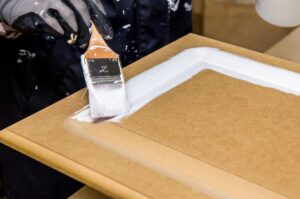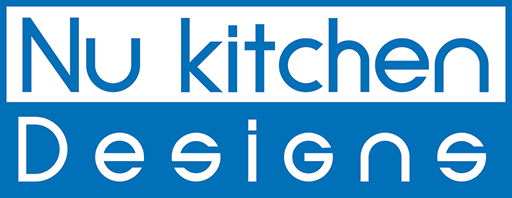Your kitchen cabinets may look outdated or worn, but completely replacing them can quickly drain your wallet. Choosing between cabinet refurbishing and refacing might seem overwhelming—especially when you’re balancing cost, value, and lasting appeal.
Refurbishing involves freshening up existing cabinets by repainting or refinishing them, offering quick and budget-friendly improvements. Refacing, however, gives cabinets a more significant makeover by swapping out the doors and drawer fronts and applying new surfaces. Both options can save money compared to buying entirely new cabinets, but how do you know which offers more savings without sacrificing quality?
Whether you’re a homeowner preparing your home for sale or simply trying to upgrade your kitchen affordably, understanding the cost benefits clearly matters. Here’s a straightforward breakdown to help you make the best decision for your kitchen and budget.
Table of Contents
ToggleWhat Is Cabinet Refurbishing?

If your kitchen or bathroom cabinets still work well but look tired or worn, cabinet refurbishing could be the perfect budget-friendly fix. This approach freshens up your existing cabinets without the cost and hassle of full cabinet replacement. You keep your current cabinets but update their appearance by painting, refinishing, or doing minor repairs like fixing scratches and replacing hardware. It’s ideal when you want a quick kitchen makeover that doesn’t break the bank.
| Method | What it Involves |
| Repainting | Applying fresh paint to existing surfaces. |
| Refinishing | Sanding and staining wood surfaces. |
| Minor Repairs | Fixing hinges, knobs, or small imperfections. |
Refurbishing makes sense if:
- Your cabinet boxes and doors are structurally sound.
- You’re on a tight budget.
- You prefer minimal disruption (usually completed quickly).
What Is Cabinet Refacing?

When refacing cabinets, you keep your existing cabinet boxes but replace the visible parts like cabinet doors and drawer fronts. Cabinet refacing involves applying new veneer or laminate surfaces over your current cabinets, giving them a complete makeover. The inside boxes remain the same, which helps save money compared to buying brand-new cabinets.
Here’s how cabinet refacing works:
- Remove old cabinet doors and drawer fronts.
- Cover existing cabinet boxes with veneer or laminate.
- Install new cabinet doors, drawer fronts, and hardware.
Refacing your kitchen cabinets is perfect when:
- The doors look outdated, but your cabinet boxes are sturdy.
- You want a custom look without changing your kitchen layout.
- You want your renovation done fast, usually completed in just a few days.
Cost Comparison: Refurbishing vs. Refacing
Understanding costs helps you choose between cabinet refurbishing and refacing. If you’re handy with special tools, refurbishing kitchen cabinets yourself saves money, typically costing around $200 to $500. For refacing, you’ll spend more on materials like real wood veneer and replacement doors, with DIY costs about $500 to $1,500.
Hiring professionals raises costs but ensures quality. Refurbishing usually ranges from $800 to $2,500, while refacing can cost between $3,000 to $7,000. Refacing costs more upfront because you’re getting brand-new doors and a completely refreshed style.
| Cost Factor | Cabinet Refurbishing | Cabinet Refacing |
| DIY Costs | ~$200–$500 | ~$500–$1,500 |
| Pro Costs | ~$800–$2,500 | ~$3,000–$7,000 |
Many satisfied customers find refacing worthwhile due to the dramatic transformation. Always consider your budget and goals, and ask about a free consultation to guide your decision.
Which Option Saves More Money Long-term?
When choosing between cabinet refurbishing and refacing, upfront costs aren’t your only consideration. Long-term savings depend on durability, upkeep, and how each affects your home’s value.
Refurbishing saves you money immediately. You can refresh your kitchen quickly and cheaply. However, since you’re working with older surfaces, refinished cabinets may wear out faster, meaning you’ll spend more overtime on maintenance or another update sooner.
Refacing, while more expensive upfront, provides lasting durability. You receive new doors and drawer fronts made from sturdy materials, such as real wood or laminate. Quality refacing can last 10–15 years or more, extending your investment. Additionally, updated cabinets typically enhance your home’s resale value, especially if you opt for popular styles such as modern shaker or classic raised-panel doors.
If you plan to stay in your home long-term or want to improve its resale appeal, refacing cabinets offers more substantial overall savings. Refurbishing fits best for short-term improvements on a tight budget.
Pros and Cons Quick Breakdown
Here’s an easy comparison to simplify your decision:
| Feature | Cabinet Refurbishing | Cabinet Refacing |
| Upfront Cost | Lower (Budget-friendly) | Higher (More investment) |
| DIY-Friendly | Easy | Moderate to difficult |
| Durability | Shorter lifespan | Longer-lasting |
| Visual Change | Minimal, limited style | Dramatic, custom cabinets look |
| Home Resale Value | Small improvement | Noticeable boost |
Consider carefully to ensure your kitchen updates align perfectly with your budget and future goals.
Who Should Choose Refurbishing vs. Refacing?
Choosing between cabinet refurbishing and cabinet refacing depends mainly on your goals and budget. If you’re looking to refresh your kitchen quickly without spending a lot, refurbishing is a perfect fit for your needs. It’s great for renters, homeowners preparing to sell soon, or those who want a fresh look with minimal hassle.
On the other hand, refacing cabinets may be a better option if you’re planning a larger kitchen makeover. If your current cabinets are sturdy but the doors look outdated, refacing offers a complete style upgrade without the expense of replacing them with brand-new cabinets. This method significantly boosts your home’s resale value, making it ideal if you’re selling or upgrading for the long term.
Tips to Maximize Savings on Both Options
Whichever option you choose, here are simple tips to save money while ensuring quality results:
- DIY vs. Professional:
- For refurbishing, simple painting or minor repairs can be done as a DIY project.
- Refacing typically benefits from a professional’s expertise, especially in accurately installing doors and hardware.
- Choose Durable, Affordable Materials:
- For refurbishing, pick quality paints explicitly designed for kitchens. They last longer and withstand frequent cleaning.
- For refacing, durable laminate doors or real wood veneers offer quality without breaking your budget.
- Schedule Smartly:
- Kitchen renovation discounts often appear during winter or early spring. Contractors and suppliers usually offer seasonal deals when business slows down, so be sure to take advantage of the lower prices.
Using these straightforward strategies ensures your cabinets look great, last long, and fit your budget—no matter which upgrade path you take.
Making the Right Choice
Deciding between cabinet refurbishing and cabinet refacing ultimately depends on your goals and budget. If you want a quick, affordable refresh, refurbishing makes sense. For a more dramatic kitchen update with lasting appeal, refacing cabinets offer better long-term value.
Consider carefully how each choice impacts your home’s look, functionality, and resale potential. If you’re unsure which route best fits your needs, Nu Kitchen Designs can help. With professional expertise, you’ll get clear advice tailored to your situation, budget, and style. Schedule a consultation today and take the guesswork out of your kitchen upgrade—ensuring you make a confident, informed decision you’ll be happy with for years.
Frequently Asked Questions
Refurbishing cabinets typically costs less upfront, making it an ideal option for those with a tight budget. However, refacing offers greater durability and better long-term savings.
Professionally refaced cabinets typically last 10 to 15 years or more. High-quality materials, such as real wood or durable laminate, ensure longevity.
Refurbishing slightly boosts your home's value due to an improved appearance. However, refacing cabinets generally offers a greater resale value increase due to the dramatic visual upgrade.
Cabinet refacing includes removing old doors and drawer fronts, applying new veneer or laminate to cabinet boxes, and installing new doors, drawer fronts, and hardware.
Choose cabinet refurbishing if your cabinet boxes are structurally sound, you're on a limited budget, or you prefer minimal disruption during your kitchen update.
Yes, refurbishing cabinets yourself is typically a straightforward process. Simple painting, refinishing, or minor repairs are DIY-friendly and require basic tools and supplies.


